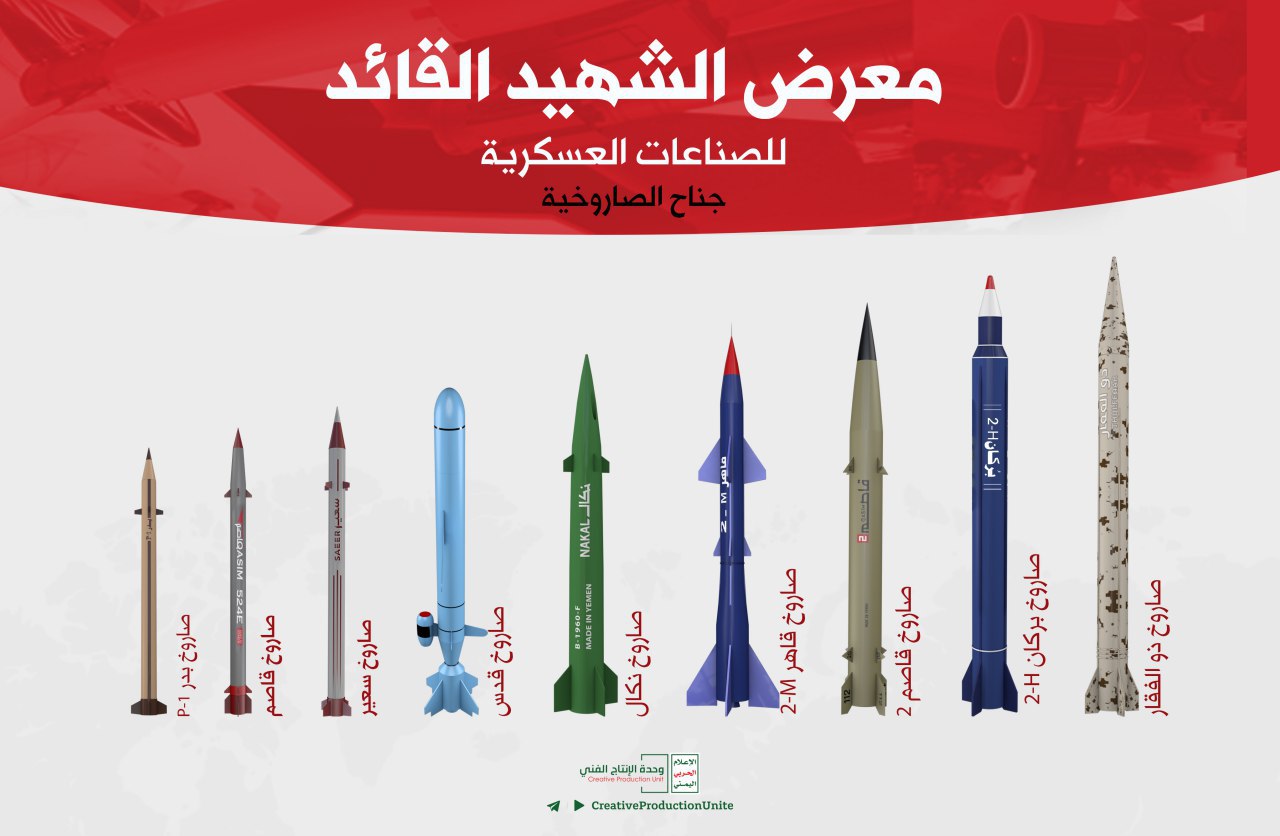From the Army’s Fragmentation and Restructuring to Acquiring Hypersonic Capabilities… Manufacturing Change
Ansaro Allah Website | Report by Ahmed Dawood
The trajectory of Yemen’s Armed Forces prior to the September 21 Revolution of 2014 was exceedingly complex. The military institution had been in steady decline, and the division and reorganization of the army into brigades and units left it incapable of defending national sovereignty or preserving territorial integrity.
It is no secret how deeply the United States and Great Britain intervened in Yemen’s military strategy rebuilding the armed forces between according to Washington’s designs, doctrine, and directives. Combat ethos vanished from these units, which were re-formed on principles detached from religion and loyalty to God and His Messenger. As a result, Yemen was weakened through the systematic emasculation of its armed forces especially the air and naval branches—while retaining land forces structured more like security detachments than a national army.
The First Test: Defense and Counterterrorism
Given this reality, the critical challenge for a military so constructed was how to defend the homeland against external aggression or to combat Takfiri extremist groups. In practice, the army failed to protect the country from foreign incursions and proved ineffective against extremist elements; it served chiefly to prop up regimes loyal to the United States and Saudi Arabia.
Rebuilding the Armed Forces
Against this backdrop, the September 21, 2014 Revolution faced the monumental task of reconstructing the army and security apparatus. Although the revolutionary leadership was committed to this undertaking, the Saudi–American military campaign began at a moment of acute political, economic, and security instability. Riyadh astutely perceived Yemen’s vulnerability and launched its aggression with the aim of crushing the revolution in its cradle before it could gain strength.
During the first months of air strikes, the coalition targeted all remaining military infrastructure, bombing camps and installations with intelligence provided by a vast Saudi information network. Coalition spokesman Ahmed al-Asiri publicly claimed that 90 percent of Yemen’s military capabilities had been destroyed.
In reality, the Saudi–American coalition would not have initiated such a campaign if it believed Yemen still possessed a robust military arsenal capable of threatening Saudi Arabia; its intelligence judged the Yemeni armed forces to be toothless, making Yemen an easy target for defeat and reintegration into their sphere of influence after the September 21 victory.
Building from the Ground Up
Yet the true miracle amid these upheavals was the rapid reconstruction of Yemen’s military and security institutions essentially starting from scratch even as air strikes intensified. Revolutionary army brigades and Popular Committees were formed to defend the nation, later giving rise to a multi-tiered armed force.
Military-industrial development began in earnest:
2017–2018: Production of short-range weapons and munitions, including fragmentation rockets, and the induction of the smart “Badr P-1” missile just one month after its debut.
Second phase: Development of medium- and long-range systems, notably the ballistic “Qaher 1” (upgraded from the Russian SA-2), the heavy-warhead “Qaher M2,” and the “Burkan” series—“Burkan 1” (an evolved Scud-B), “Burkan 2” (range extended beyond 1,000 km), and the medium-range “Burkan H2.” The “Quds 1” system entered service, followed by the liquid-fuel “Dhu Al-Fiqar” and the precision “Qasim 1.” Cruise-capable “Sa’ir,” “Qasim 2,” and “Quds 2” missiles (with ranges of 1,700–2,500 km) were also fielded.
Late 2017: Creation of a “Unmanned Air Force” directorate, initially operating reconnaissance drones (Rasid, Raqib, Hudhud). The locally manufactured “Qasef 1” attack UAV, carrying a 30 kg warhead and fitted with a smart targeting system, entered service that same year.
2018–2021: Quantitative and qualitative expansion of the UAV fleet, with “Samad 1,” “Samad 2,” and “Samad 3” models unveiled by the Military Industries Authority.
A comprehensive account of Yemen’s ballistic-missile, drone, and naval-mine industries demands an extended study, and is beyond the scope of this report.

MR Abdul-Malik Badr al-Din al-Houthi has emphasized in speeches that the driving factors behind this rebirth were unwavering will, trust in God, and reliance on Him. As a result, Yemen now ranks among the few nations possessing high-end weaponry most notably hypersonic ballistic missiles and advanced attack drones which played a decisive role in supporting our oppressed brethren in Gaza during Operation Al-Aqsa Flood and in altering U.S. and Israeli strategic calculations.
A Regional Power to Reckon With
Yemen’s formidable and, to its adversaries, astonish in military capabilities have instilled fear not only

